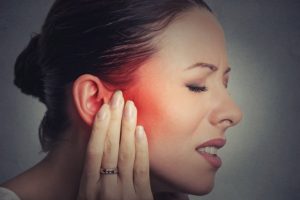 Relapsing polychondritis is an autoimmune disorder that presents with non-specific symptoms affecting the neck, nose, throat, and ears. The disease is rare and primarily involves cartilage tissue becoming inflamed.
Relapsing polychondritis is an autoimmune disorder that presents with non-specific symptoms affecting the neck, nose, throat, and ears. The disease is rare and primarily involves cartilage tissue becoming inflamed.
Any tissue that contains cartilage is at risk of being affected by this condition. The eyes, blood vessels, and heart have cartilage in them, making them potential sites for inflammation.
Advertisement
Twenty-five to thirty-five percent of people suffering from relapsing polychondritis also suffer from other autoimmune disorders.
What causes relapsing polychondritis?
No one knows why relapsing polychondritis occurs, but it is suspected to have an autoimmune association. This means that the body’s own immune cells, normally responsible for fighting off foreign invaders, attack the body itself. The condition may also be linked to certain gene mutations, however, relapsing polychondritis doesn’t seem to run in families.
Complications may arise as this condition leads cartilage to collapse. This can lead to a disfigured face and an obstructed airway. It also affects the eyes and ears, leading to their disfigurement as well.
What are the symptoms of relapsing polychondritis?
Because collagen is present throughout the body, the symptoms of relapsing polychondritis may present in several different ways. These include:
- Weight loss
- External ear pain
- Dizziness, vertigo, tinnitus (ringing in the ears)
- Ataxia of vestibular origin (loss of balance)
- Hearing impairment—46 percent of patients in later stages suffer from hearing problems
- Arthralgia (joint pain)—50 to 85 percent of cases affect the synovial joints
- Chondritis (inflammation of cartilage)
- Nose pain
- Hoarse voice and difficulty speaking
- Laryngeal, glottis, and subglottic inflammation
- Oedema (fluid buildup)
- A cough, choking, and wheezing
- Costochondritis (pain in chest)
- Recurrent episcleritis and scleritis (inflammatory conditions of the eye)
- Myocarditis, pericarditis, aneurysm, and myocardial infarction
- Glomerulonephritis (kidney pathology)
- Cranial lesions
Diagnosing polychondritis
Because relapsing polychondritis is a rare disorder, no diagnostic tests exist. So, it is up to your doctor to accurately identify the symptoms and refer you to a specialist. Various symptoms and diagnostic criteria can provide clues to relapsing polychondritis. The most common criterion is known as Mc Adams:
- Recurrent chondritis on both auricles
- Chondritis of respiratory tract including tracheal cartilage and laryngeal
- Inflammatory but non-erosive polyarthritis
- Inflammation of the ocular structures
- Vestibular or cochlear damage
If relapsing polychondritis is seriously suspected, a cartilage biopsy can be obtained. However, it should not be done without caution. Cartilage does not have its own blood supply and may heal poorly if at all.
Treating relapsing polychondritis
Advertisement
Unfortunately, there is no cure for relapsing polychondritis. Therefore, the main mode of treatment is to relieve symptoms by decreasing the amount of inflammation. The use of over counter anti-inflammatory medications, such as Motrin or Advil, can help manage pain.
If symptoms are troubling, your doctor may suggest using steroid medication. This can help with moderate cases of inflammation. In more severe cases of inflammation, the use of drugs that inhibit the immune system may be utilized.
Relapsing polychondritis diet
It is possible to employ various nutritional strategies to help with symptoms of relapsing polychondritis. A diet called the McDougall program is recommended by many as it is practical. This diet is basically a low-fat vegan diet. This means no dairy or eggs and the elimination of all meats.

